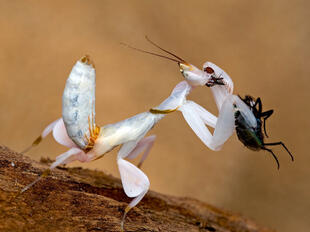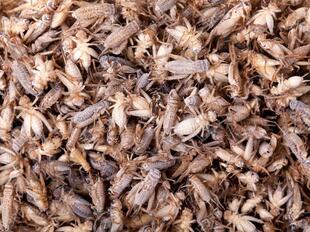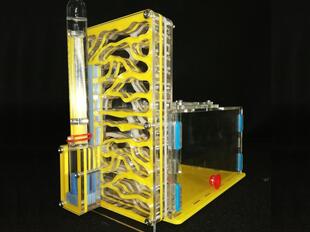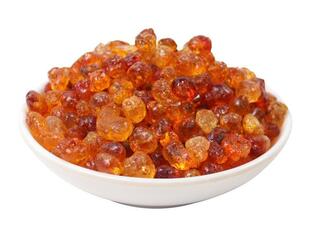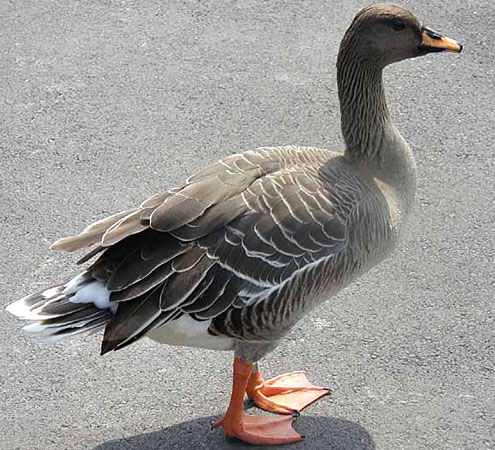
Bean goose(Anser fabalis)
Phylum —chordata
Class — aves
Order — anseriformes
Family — anatidae
Genus – anser
There are five subspecies, with complex variation in body size and bill size and pattern; generally, size increases from north to south and from west to east. Some ornithologists split them into two species based on breeding habitat, whether in forest bogs in the subarctic taiga, or on the arctic tundra.
- Taiga bean goose:
- Anser fabalis fabalis. Scandinavia east to the Urals. Large; bill long and narrow, with broad orange band.
- Anser fabalis johanseni. West Siberian taiga. Large; bill long and narrow, with narrow orange band.
- Anser fabalis middendorffii. East Siberian taiga. Very large; bill long and stout, with narrow orange band.
- Tundra bean goose (Anser serrirostris, if treated as a distinct species):
- Anser serrirostrisrossicus. Northern Russian tundra east to the Taimyr Peninsula. Small; bill short and stubby, with narrow orange band.
- Anser serrirostrisserrirostris. East Siberian tundra. Large; bill long and stout, with narrow orange band.
Appearance
The length ranges from 68 to 90 cm (27–35 in), wingspan from 140 to 174 cm (55–69 in) and weight from 1.7–4 kg (3.7–8.8 lb). In the nominate subspecies, males average 3.2 kg (7.1 lb) and females average 2.84 kg (6.3 lb).
The bill is black at the base and tip, with an orange band across the middle; the legs and feet are also bright orange.The upper wing-coverts are dark brown, as in the white-fronted goose and the lesser white-fronted goose, but differing from these in having narrow white fringes to the feathers.
Behavior
The main behavior observed in geese is aggression, usually when defending the home territory. Aggression is displayed through three neck postures: erect (vertical), diagonal, and forward.
Typically diurnal, geese have been observed to switch to night activity when hunting pressure from humans intensifies. Bean geese nests have been found to nest close to peregrine falcons and rough-legged hawks. These two species act as "prey-protectors," helping defend areas against Artic foxes.
Diet
Bean geese are herbivores. They eat grass, seeds, corn, rice, barley, wheat, soy beans, potatoes and sugar beets.
Reproduction
Bean geese mate for life and mates are selected by the second winter of life. When choosing a mate, courtships are performed over several weeks. Activities may include flights of three or four birds together or a display of the tail feathers when swimming. This species breeds yearly and pairs typically raise the young together. On occasion (15% in one study), broods are raised by single parents. Bean geese typically lay 4 to 6 eggs which are incubated for 27 to 29 days. Goslings fledge around day 40 and but are not fully independent until approximately 2.5 months. Sexual maturity is generally reached in the second or third year of life.
In the wild, this goose can live 20-25 years, in captivity it lives up to 30 years.
Incaptivity
When keeping this species, it is necessary to have a pool with water or a natural reservoir. The optimal ratio of the reservoir area to pasture is 20% water and 80% pasture. The optimal area of the entire enclosure is 200 sq. m. The optimal height of grass in the pasture is 7.5 cm.
It is necessary to build a poultry house on the territory of the aviary. Geese will be able to hide in it from the cold and wind in the cold season. You need constantly to update the litter in the poultry house. For such bedding, you will need about 40 kg of dry straw (hay). It is important to replace the wet bedding in time. Otherwise, the plumage quickly becomes dirty and does not protect the bird from the cold.
The poultry house should be made of wood or mud. Humidity and drafts are not allowed in it. Proper maintenance of geese is the key to their health.
During the construction of a poultry house, it is very important to take into account that at least one square meter of floor space should be allocated for one adult goose. With a higher density, the room will quickly become polluted, and the air in it will stagnate. This can cause diseases of wild geese and significantly reduce their productivity. Once a year, you need to whitewash the walls with freshly slaked lime.
Geese eat natural grasses. You can add to herbs: wheat grains, waterfowl pellets, and chicken feed. If there is not enough grass on the pasture, it is necessary to bring mown fresh grass. In winter, you can feed sliced vegetables, especially good to give cabbage and salads. Not averse to eating worms, insects and shellfish sometimes.
 Russian
Russian
 English
English




















